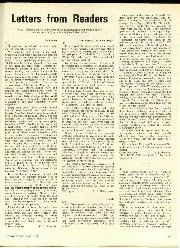
Letters from readers, May 1973
N.B. – Opinions expressed are those of our correspondents and Motor Sport does not necessarily associate itself with them. – Ed. Dazzle Sir, Mr. Vyse states that apparently, an increasing…

In the collectibles world there are a fair few buzz words when it comes to products, especially ones that have been reproduced. So now seems a good time to address the question of what differentiates a continuation product from a replica, and what’s official or fake.
There are some blurred lines with this, and a great example is the ‘continuation’ D-types made using original plans and 25 unallocated D-type chassis numbers. To me, these cars, built using modern materials are replicas – an official one, built by Jaguar, using the same tooling, but to modern standards… and they’re superb.
In the memorabilia world if a customer asks us to commission a classic Everoak helmet in the style of Stirling Moss or Jim Clark, we’ll make it clear that the product can be based around a period shell (so becomes a restoration or continuation), or a modern shell (replica).

For many older marques and drivers there’s no need to license anything. So brands can reproduce Surtees, Clark, Hill, Mansell… whatever they like, often with varying quality of moulds and sell them perfectly legally. There’s nothing wrong with that if you simply want a display piece, but it can harm how collectible they can become.
With modern drivers and teams, things have tightened up greatly. Many modern designs are subject to copyright and require a licence to reproduce, making copies of them ‘official licensed replicas’. Many F1 teams are now in the official licensed replica market, and their products will always be collectible, just because they are the official copies.
Blurred lines, but clear distinctions all the same.